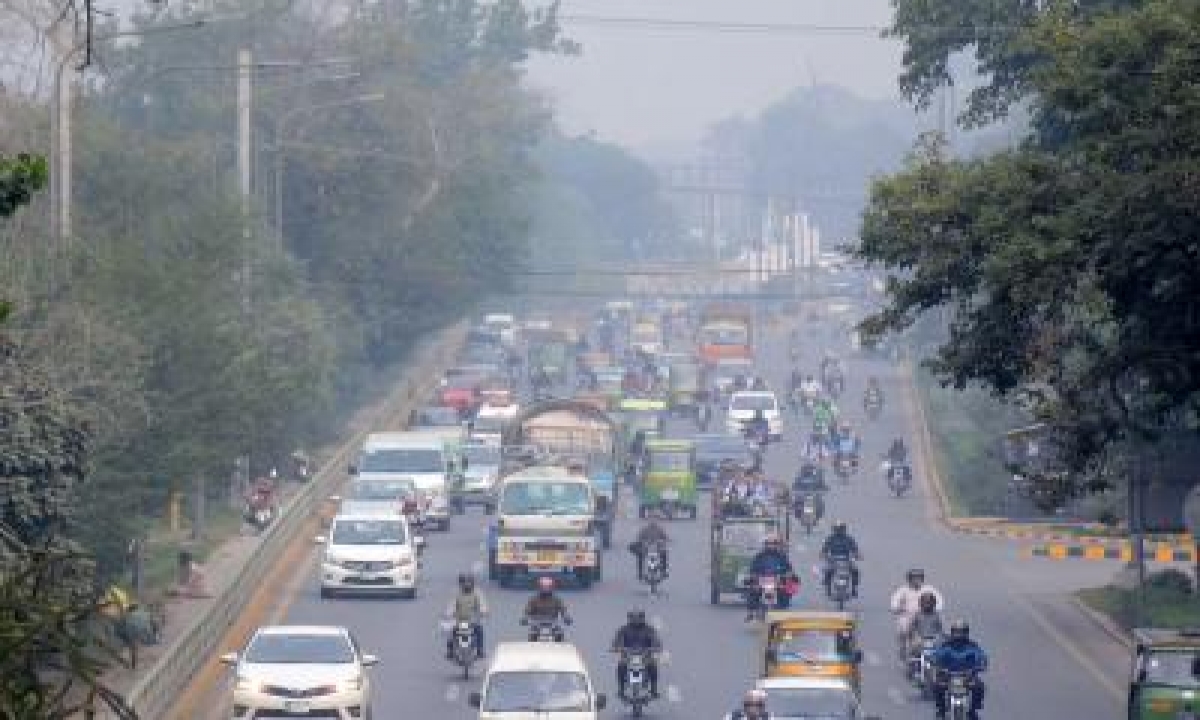By Vishal GulatiChandigarh, Oct 30 : Smog produced due to burning of paddy stubble in Punjab fields is highly unlikely to travel 300-400 km to adversely impact Delhi’s air quality, Ludhiana-based Punjab Agricultural University’s (PAU) experts said on Friday.
The inference by researchers at the Department of Climate Change and Agriculture Meteorology is based on the wind speed in Punjab during October and November between 2017 and 2019.
Prabhjyot Kaur Sidhu, who has compiled the study, told IANS that if smog from Punjab were to move towards Haryana and Delhi, the wind speed should be more than 4-5 km per hour and its direction north-westerly or at least westerly.
She said that in the three years under study, on only one day did the wind speed exceed 5 km/hr to 5.9 km/hr on November 7, 2019.
“In fact, the wind direction that day was southeast easterly, which means wind from neighbouring states like Haryana and Delhi was blowing towards Punjab,” Sidhu explained.
The southeast easterly wind from Punjab is thus highly unlikely to affect the air quality in neighbouring states, she said.
With the fall in mercury in October and November, there is reduction in the formation of air currents.
“A stable atmospheric condition is created during these two months in which only a little vertical movement of air current occurs while horizontal movement of air is also reduced.Dust and smoke particles added to the atmosphere due to straw-burning and other pollution sources get entrapped,” Sidhu said.
“It is like a closed-room situation in which hardly anything comes in from outside or goes out.This situation starts building up over the days until a low-pressure weather system or a western disturbance moves in and relieves the situation in the form of horizontal wind drift or some rainfall which sort of washes the lower parts of the atmosphere,” the researcher said.
In the plains of northern India, especially paddy-growing states, each state is saddled with its own pollutants.
The creation as well as avoidance of smog in any area is in the hands of residents.
Concerted local efforts are the key to solving this problem, she said.
Her fellow researchers, including Sukhjeet Kaur and Sandeep Singh Sandhu, compiled average wind speed at 10 stations — Gurdaspur, Ballowal Saunkhri, Chandigarh, Amritsar, Ludhiana, Patiala, Ambala, Bathinda, Faridkot and Abohar.
For the northern states, October is very critical as the temperatures are reduced and the air pollution level goes up due to stubble-burning and bursting of firecrackers during Dussehra and Diwali.
The study revealed that the number of smog days in Punjab over the years had increased.
In 2012, smog was recorded for two days — November 11 and 14.Diwali was celebrated on November 13 that year.
In 2017, smog was recorded for 12 consecutive days.Diwali was celebrated on October 19.But the smog was concentrated from November 1 to 13.On November 14-15 the smog dissipated when the wind speed increased up to 4-8.5 km/hr.
Next year witnessed smog for 11 days, i.e., three consecutive days during the end of October and eight consecutive days in November.Diwali was celebrated on November 7 in 2018.On November 14, smog dissipated when the wind speed increased to 5.7 km/hr.
Last year, smog was witnessed for 10 days, i.e., five consecutive days during the end of October and five consecutive days in November.Diwali was celebrated on October 27 last year.
On November 6-7, the smog scattered when the wind speed increased by 8.9 to 10.5 km/hr.
Sidhu said that it was evident that the formation of smog in the lower atmosphere occurs when the wind is calm.As soon as the wind speed increases, automatic dissipation of smog occurs.
As per the report, out of 77 days from October 1, calm wind conditions in Punjab were recorded for 58 days (75.3 per cent) in 2017; 42 days (54.5 per cent) in 2018 and 44 days (57.1 per cent) in 2019.
During this period, light breeze blew only on November 7, 2019, with a speed of 5.9 km/hr.
(Vishal Gulati can be contacted at vishal.g@ians







